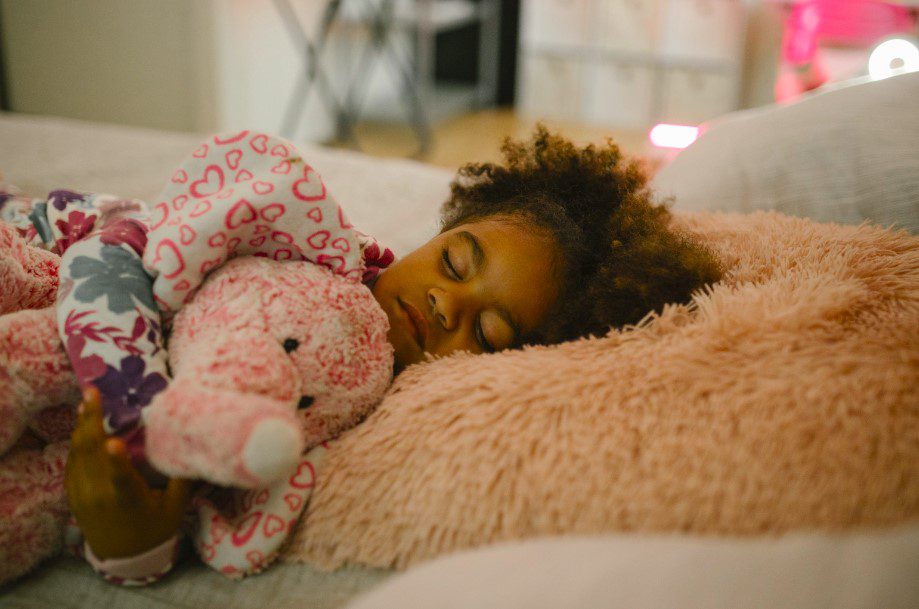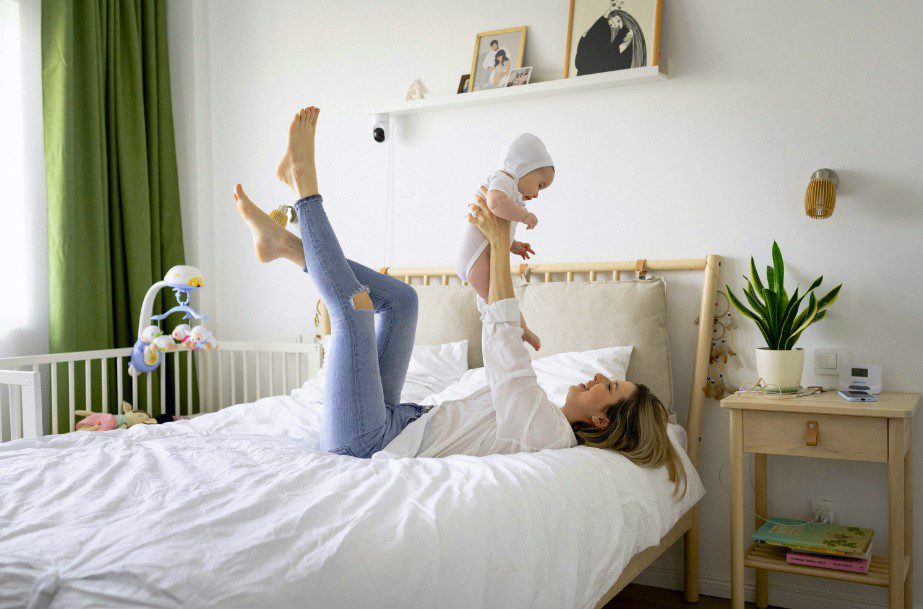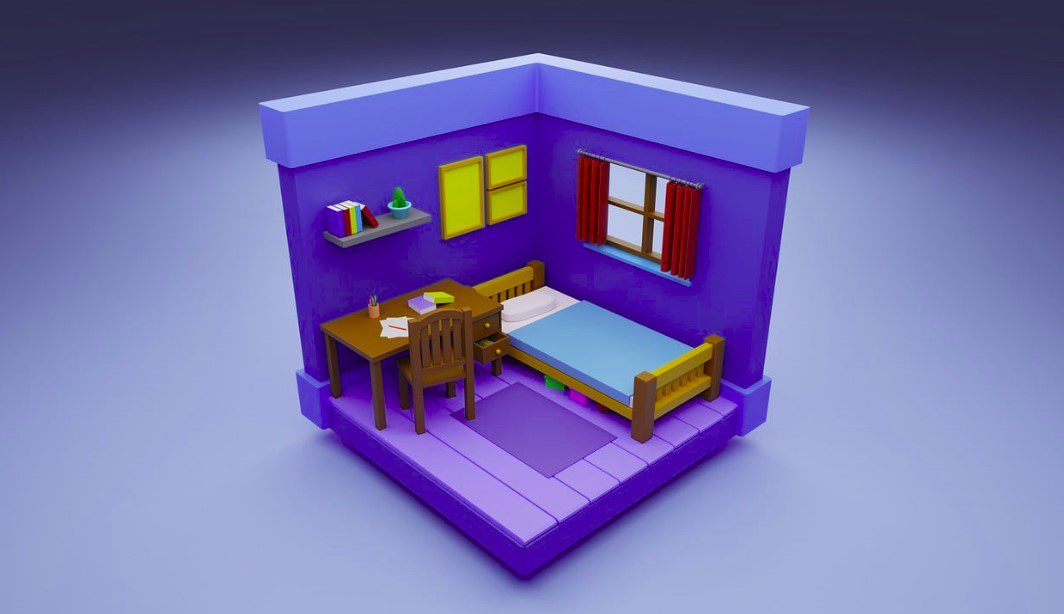Your child’s bedroom is more than just a place to sleep; if healthy, it is a haven where they find solace and rejuvenate. The health of the bedroom can directly impact the overall well-being of your child.
The quality of the environment in the bedroom can have a profound impact on health, sleep quality, and daily life. From the air your child breathes to the comfort of the mattress, and even the colors on the walls, every aspect inside the bedroom is important.
… Better Sleep for Growth and Development
Quality sleep is vital for a child’s growth and development. Children who sleep well tend to have improved memory, concentration, and overall cognitive abilities. A healthy bedroom contributes significantly to a good night’s sleep.
… A Safe Sanctuary
A child’s bedroom should be a secure and comfortable sanctuary where they can retreat to rest, play, and study. Creating a healthy environment ensures that your child’s well-being is prioritized.
Below, we explore the key factors that determine whether your child’s bedroom is a healthy retreat or a potential source of health issues.
What Makes Your Child’s Bedroom Healthy?

1. Indoor Air Quality
The air you child breathes while sleeping is a crucial factor in maintaining a healthy bedroom. Poor indoor air quality can lead to respiratory issues, allergies, and poor sleep.
Here are some steps to ensure clean, fresh air:
- Ventilation: Adequate ventilation is essential. Open windows during the day to let fresh air in, and use exhaust fans to remove stale air.
- Air Purifiers: Consider using air purifiers with HEPA filters to trap allergens and pollutants.
- Avoid Smoking: Never smoke inside the bedroom as it can severely degrade air quality.
2. Temperature and Humidity
The ideal temperature and humidity levels in a bedroom are critical for a good night’s sleep and overall well-being.
- Temperature: Maintain a comfortable temperature, typically between 60-67°F (15-19°C). Use blankets or a fan to adjust as needed.
- Humidity: Aim for a relative humidity level between 30-50% to prevent mold growth and maintain comfort.
3. Mattress and Bedding
Your choice of mattress and bedding can significantly affect the quality of your child’s sleep.
- Mattress Quality: Invest in a good-quality mattress that provides proper support and comfort. Look for options that are certified for low chemical emissions.
- Bedding: Opt for natural and hypoallergenic materials for your pillows, blankets, and sheets. Regularly wash and replace them to prevent dust mites and allergens buildup.
4. Lighting
Proper lighting is crucial for a child’s well-being. Natural light during the day and appropriate artificial lighting at night can significantly impact their mood and sleep patterns.
Here’s how to achieve the right lighting:
- Maximize Natural Light: Position the bed and study areas near windows to maximize natural light exposure during the day.
- Dimmable Lighting: Install dimmable light fixtures to create a relaxing bedtime atmosphere. Where possible, lights should be turned off when the child is asleep.
5. Noise Pollution
A quiet environment is crucial for quality sleep. Noise pollution can disrupt your sleep and your child’s.
- Soundproofing: If possible, invest in soundproofing materials for the walls and windows to reduce outside noise.
- White Noise Machines: Consider using white noise machines or fans to drown out disturbing sounds.
6. Bedroom Hygiene
Maintaining a clean and clutter-free bedroom is essential for good health.
- Regular Cleaning: Dust and vacuum your bedroom regularly to minimize allergens. Pay attention to hard-to-reach areas.
- Declutter: Keep the bedroom free of unnecessary items that can collect dust and clutter the space.
7. Personalization and Creativity
A child’s bedroom should reflect their personality and interests. Encourage personalization and creativity:
- Decor Choices: Allow your child to choose decor items that resonate with their interests.
- Art and Crafts Corner: Create a space for your child to explore their creativity with art and craft supplies.
- Colors: Choose calming and soothing colors like soft blues, greens, or neutrals to create a serene atmosphere.
- Personal Touch: Personalize your child’s bedroom with decor that brings them joy and comfort.
8. Safety Measures
Child safety is paramount in the bedroom. Make sure to take necessary precautions:
- Childproofing: Install safety gates, secure heavy furniture, and keep small objects out of reach.
- Safe Sleep Environment: Follow safe sleep guidelines for infants, including placing them on their back in a crib with no loose bedding or toys.
9. Non-Toxic Materials
The choice of materials in your child’s bedroom can have a significant impact on their health. Ensure that you opt for non-toxic, eco-friendly materials for furniture, flooring, and decor. Here are some tips:
- Low-VOC Paint: Use low-VOC (Volatile Organic Compounds) paint to reduce indoor air pollution.
- Organic Bedding: Choose organic bedding materials to avoid exposure to harmful chemicals.
10. Technology and EMF Exposure
Electromagnetic fields (EMF) from electronic devices can potentially impact health and sleep quality of children.
- Limit Electronics: Minimize the use of electronic devices in the bedroom, especially close to bedtime.
- EMF Shielding: Consider EMF shielding products if you have concerns about EMF exposure.
The Last Word

The factors we’ve discussed, from air quality to safety measures and even the color of your walls, collectively shape the environment in which your child can rest and rejuvenate. By understanding these elements and making conscious choices, you have the power to transform the bedroom into a sanctuary that promotes better sleep, overall health, and peace of mind.
So, take the insights and recommendations provided in this guide to heart and make the necessary changes to optimize the health of your bedroom.





Leave a Reply